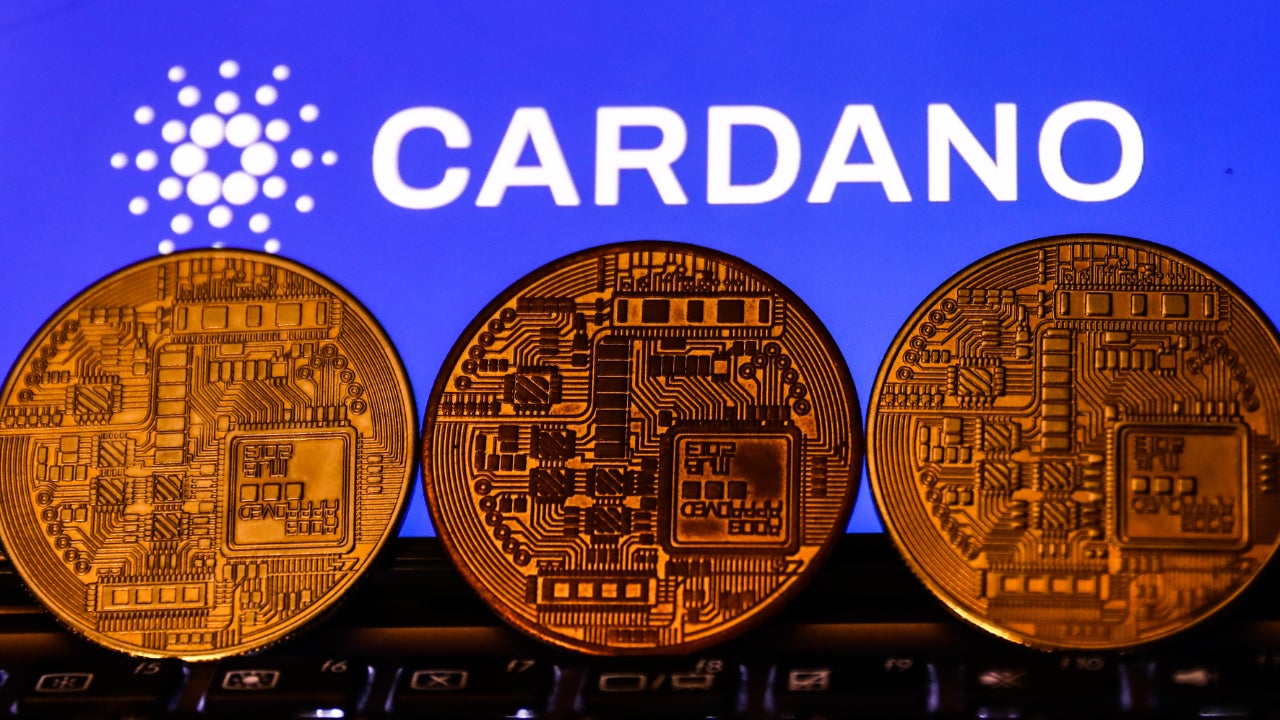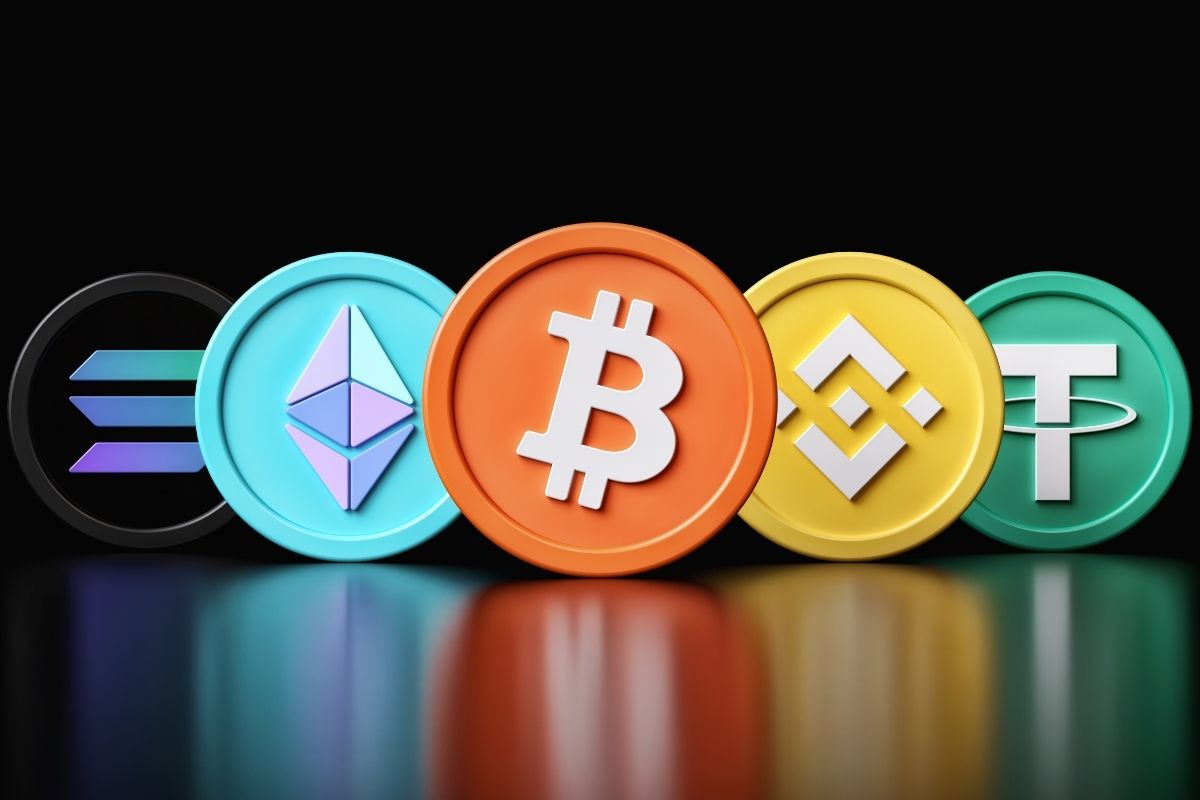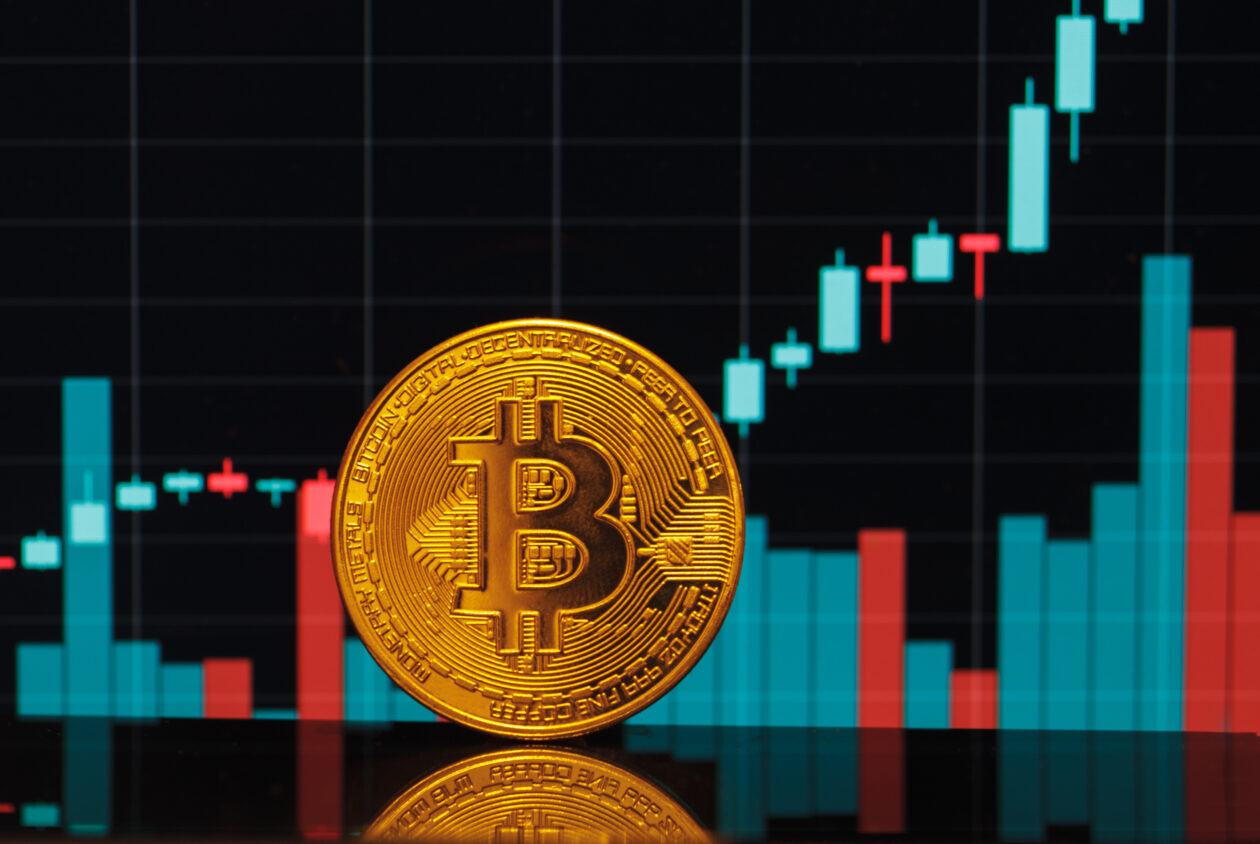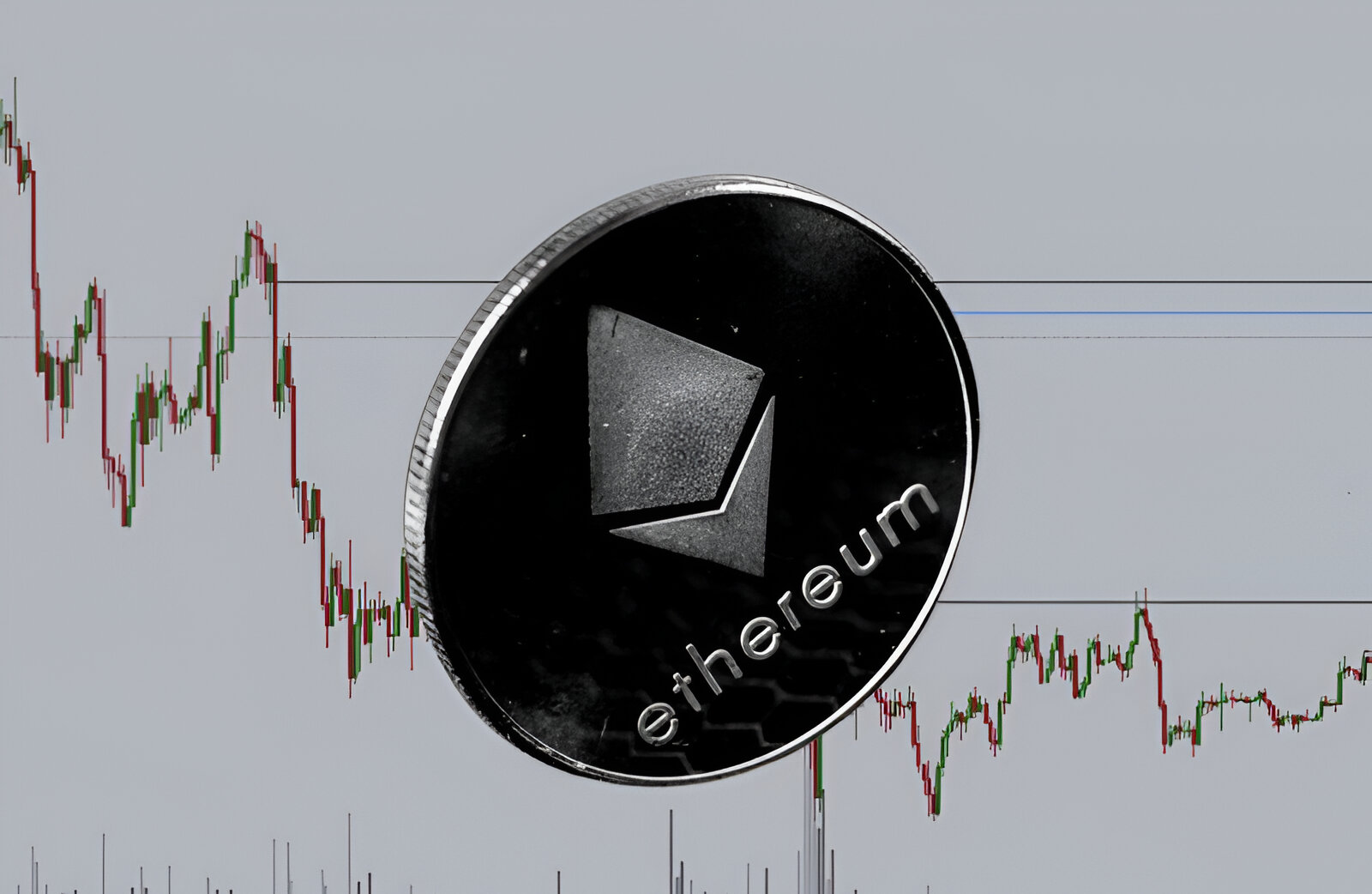Introduction
Welcome to the world of Cardano, a groundbreaking blockchain platform that aims to revolutionize the way we build and operate decentralized applications. Cardano is not just a cryptocurrency, but a sophisticated ecosystem that combines advanced technology, rigorous research, and a forward-thinking approach to create a more secure, scalable, and sustainable blockchain infrastructure.
Launched in 2017 by Input Output Hong Kong (IOHK), Cardano is named after Gerolamo Cardano, an Italian mathematician, physician, and philosopher. It was founded by Charles Hoskinson, one of the co-founders of Ethereum, and is backed by a team of expert engineers, academics, and researchers.
Cardano sets itself apart from other blockchain platforms by embracing a scientific and evidence-based approach to development. Its team relies on peer-reviewed research and rigorous testing to ensure that each aspect of the blockchain is robust, scalable, and can adapt to future innovations.
Unlike other cryptocurrencies that were developed primarily for financial transactions, Cardano aims to address some of the most pressing issues in the blockchain industry, such as scalability, interoperability, and sustainability. It strives to create a platform that can support a wide range of applications while maintaining high security standards.
Cardano’s ultimate vision is to provide a decentralized and inclusive financial system for billions of unbanked individuals around the world. By leveraging blockchain technology, Cardano is committed to bridging the gap between traditional financial systems and emerging economies, providing access to essential financial services in a transparent and secure manner.
In the following sections, we will delve deeper into what Cardano is, how it works, its key features, and the potential applications that it holds. Let’s explore the exciting journey of Cardano and the promising future it offers.
What is Cardano
Cardano is a blockchain platform that aims to offer a more secure, scalable, and sustainable infrastructure for decentralized applications. Unlike many other blockchain platforms, Cardano focuses not only on the technology but also on the academic research and scientific approach behind it. It is designed to address the limitations and challenges of existing blockchain systems, providing a robust foundation for innovation and adoption.
At its core, Cardano is built on a unique architecture that separates the settlement layer, responsible for handling transactions and value transfer, from the computation layer, which is dedicated to smart contract execution. This separation allows for greater flexibility and scalability, as it enables the development of specialized applications and protocols while maintaining the integrity of the base layer.
Cardano also differentiates itself through its use of the Ouroboros Proof of Stake (PoS) algorithm. Unlike the energy-intensive Proof of Work (PoW) method utilized by cryptocurrencies like Bitcoin, Cardano’s PoS approach reduces the environmental impact and increases scalability. This algorithm enables ADA token holders to participate in the consensus process and earn rewards by staking their coins, contributing to the security and stability of the network.
One of the key principles behind Cardano’s development is the focus on peer-reviewed research and scientific rigor. The team behind Cardano actively collaborates with leading universities and research institutions, ensuring that the technology is backed by solid evidence and innovative ideas. By blending academic expertise with practical implementation, Cardano aims to bridge the gap between theory and real-world application.
Furthermore, Cardano prioritizes interoperability, allowing for seamless communication and compatibility between different blockchain networks. This enables developers to build applications that can interact with other blockchain platforms, fostering a more connected and collaborative ecosystem.
Overall, Cardano represents a new generation of blockchain technology that combines scientific rigor, scalability, and sustainability. With a strong emphasis on research and a commitment to solving real-world problems, Cardano is poised to drive innovation and adoption in the decentralized industry. In the next sections, we will uncover the inner workings of Cardano and delve deeper into its features and potential applications.
How Does Cardano Work
Cardano operates on a unique two-layered blockchain architecture, separating the settlement layer from the computation layer. This design provides enhanced security, scalability, and flexibility for building decentralized applications.
The settlement layer, known as Cardano Settlement Layer (CSL), is responsible for processing transactions and maintaining a record of the ADA cryptocurrency. It operates on a modified version of the UTXO (Unspent Transaction Output) model, which allows for quick and efficient verification of transaction inputs and outputs. The CSL utilizes the Ouroboros Proof of Stake (PoS) algorithm to achieve consensus among network participants. ADA holders can stake their tokens to participate in the consensus process and earn rewards.
The computation layer, called the Cardano Computation Layer (CCL), focuses on executing smart contracts and running decentralized applications. It supports multiple programming languages, allowing developers to code in their preferred language. This layer promotes modularity, enabling the creation of specialized applications and protocols that can be seamlessly integrated with the base settlement layer.
Cardano utilizes a treasury system, known as the Cardano Treasury, to fund its ongoing development and ecosystem growth. A portion of the transaction fees generated on the network is allocated to the treasury, providing a sustainable source of funding for research, infrastructure, and community initiatives. This approach ensures a long-term commitment to the platform’s development and sustainability.
Another key aspect of Cardano’s functionality is its focus on interoperability. By using an intermediary layer called the Cardano Virtual Machine (CVM), Cardano enables smooth communication between different blockchain networks. This allows for the transfer of assets and data across multiple platforms, fostering a more connected and collaborative ecosystem.
Cardano’s development approach is guided by rigorous research and peer-reviewed academic papers. The team behind Cardano actively collaborates with universities and research institutions to ensure the adoption of innovative ideas and the integration of cutting-edge technology. This scientific approach enhances the security, reliability, and scalability of the platform.
Furthermore, Cardano aims to ensure transparency and accountability through its strong governance system. ADA token holders can participate in shaping the future of the platform by submitting improvement proposals and voting on key decisions. This decentralized governance model ensures that the platform’s development direction aligns with the interests and values of the community.
In summary, Cardano’s two-layered architecture, with its settlement layer and computation layer, promotes scalability, security, and flexibility. By embracing a scientific approach, focusing on interoperability, and incorporating a robust governance system, Cardano provides a solid foundation for the development of decentralized applications and supports the growth of its ecosystem.
History of Cardano
Cardano’s journey began in 2015 when Input Output Hong Kong (IOHK), a blockchain research and development company, decided to tackle the shortcomings of existing blockchain platforms. Led by Charles Hoskinson, one of the co-founders of Ethereum, IOHK embarked on a mission to create a more secure, scalable, and sustainable blockchain infrastructure.
In September 2017, Cardano’s mainnet, the Shelley era, was launched, marking a significant milestone in the platform’s development. The launch represented the transition from a federated network to a decentralized one, allowing ADA token holders to participate in the consensus process and earn rewards through staking.
Cardano’s journey has been guided by a strong emphasis on research and peer-reviewed academic papers. The team behind Cardano actively collaborates with universities and research institutions to ensure that the platform is backed by solid evidence and innovative ideas. This scientific approach has made Cardano one of the most well-researched blockchain platforms in the industry.
Throughout its history, Cardano has undergone several significant updates and protocol upgrades. One of the notable milestones was the launch of the Byron era, which introduced the Cardano mainnet and laid the foundation for subsequent developments. The Byron era focused on stability, security, and improving the user experience.
Following the successful launch of the Byron era, Cardano transitioned to the Shelley era, which aimed to decentralize the network and introduce staking to ADA holders. This marked a crucial step towards achieving Cardano’s vision of a secure and decentralized blockchain platform.
The Goguen era is the next phase in Cardano’s roadmap, focusing on smart contract functionality and opening up Cardano to a wider range of decentralized applications. This era will unlock the full potential of the platform, enabling developers to build innovative and complex applications on the Cardano blockchain.
As Cardano continues to evolve, the team is committed to bringing real-world use cases to the platform. Through partnerships and collaborations with industry leaders and governments, Cardano aims to showcase the potential of blockchain technology and drive mainstream adoption.
In summary, Cardano’s history is characterized by a strong focus on research, innovation, and development. With its scientific approach, commitment to decentralization, and continuous evolution, Cardano is poised to play a significant role in shaping the future of the blockchain industry.
Key Features of Cardano
Cardano is renowned for its unique set of features that distinguish it from other blockchain platforms. This section will explore some of the key features that make Cardano a standout in the decentralized industry.
1. Two-Layered Architecture: Cardano operates on a two-layered architecture, separating the settlement layer (CSL) from the computation layer (CCL). This design enables scalability, flexibility, and the development of specialized applications while maintaining the high security standards of the base layer.
2. Scientific Approach: Cardano stands out by taking a scientific and evidence-based approach to development. The team collaborates with top universities and research institutions, ensuring that the platform is backed by rigorous research, peer-reviewed papers, and innovative ideas.
3. Ouroboros Proof of Stake (PoS) Algorithm: Cardano utilizes the Ouroboros PoS algorithm, which provides energy efficiency, security, and scalability. ADA holders can participate in the consensus process and earn rewards by staking their tokens, contributing to the stability and decentralization of the network.
4. Interoperability: Cardano emphasizes interoperability, enabling seamless communication and compatibility between different blockchain networks. This allows for the transfer of assets and data across platforms, fostering a more connected and collaborative ecosystem.
5. Sustainability: With the Cardano Treasury system, a portion of transaction fees is allocated to fund ongoing development, research, and ecosystem growth. This sustainable funding mechanism ensures the long-term viability and evolution of the platform.
6. Strong Governance: Cardano incorporates a decentralized governance model, where ADA token holders can submit improvement proposals and vote on key decisions. This ensures community participation and alignment with the platform’s interests and values.
7. Scalability and Security: Cardano aims to address the scalability challenge by employing a layer 2 solution, known as Hydra. This layer allows for parallel processing of transactions, significantly increasing the platform’s throughput. Additionally, Cardano’s development approach prioritizes security and robustness, with rigorous testing and thorough auditing of the codebase.
8. Regulatory Compliance: Cardano recognizes the importance of compliance with regulatory frameworks. By incorporating built-in mechanisms for identity verification and transaction tracing, Cardano aims to facilitate the adoption of blockchain technology within existing legal and regulatory environments.
These key features showcase Cardano’s commitment to technological excellence, sustainability, and interoperability. With its unique design, scientific approach, and emphasis on community governance, Cardano is well-positioned to drive innovation, adoption, and real-world use cases within the blockchain industry.
ADA Cryptocurrency
ADA is the native cryptocurrency of the Cardano blockchain platform. It plays a crucial role in the ecosystem, serving as a means of exchange, a voting mechanism, and a staking asset. ADA was named after Ada Lovelace, a 19th-century mathematician widely recognized as the world’s first computer programmer.
As a digital currency, ADA can be used for various purposes within the Cardano ecosystem. It enables users to send and receive funds quickly, securely, and at low transaction fees. The decentralization of the Cardano network allows for a trustless peer-to-peer transfer of value, empowering individuals to have full control over their finances.
ADA is also essential for participating in the consensus process and securing the network. ADA holders can delegate or pledge their tokens to a stake pool, contributing to the block production and validation. By doing so, they can earn rewards based on their stake and active participation, making staking ADA an attractive way to earn passive income within the Cardano ecosystem.
In addition to its role as a transactional and staking asset, ADA holds voting rights within the Cardano governance system. ADA holders are eligible to participate in decision-making processes, voting on proposals and influencing the future development and direction of the platform. This decentralized governance model ensures community involvement and transparency, allowing for a collective decision-making process that benefits the entire ecosystem.
ADA’s value is determined by market demand and supply dynamics. It is listed on various cryptocurrency exchanges, allowing for its trading against other digital assets and fiat currencies. As with any cryptocurrency, the value of ADA can fluctuate based on market conditions, investor sentiment, and broader economic factors.
Cardano has a fixed maximum supply of 45 billion ADA tokens, ensuring scarcity and long-term value preservation. The majority of ADA tokens were distributed through a token sale event, with a portion allocated to fund the ongoing development of the platform and ecosystem growth.
Overall, ADA serves as a versatile cryptocurrency within the Cardano ecosystem. It facilitates efficient transactions, incentivizes network participation through staking, and empowers ADA holders to shape the future of the platform through decentralized governance. As Cardano continues to evolve, ADA is poised to play a vital role in driving the adoption and utility of the Cardano blockchain.
Staking on Cardano
Staking on Cardano is a key feature that allows ADA holders to actively participate in the consensus process and earn rewards by securing the network. Staking involves the delegation or pledging of ADA tokens to a stake pool, contributing to the validation of transactions and the overall security of the Cardano blockchain.
By staking ADA, participants help to maintain the stability and decentralization of the network. Stakers do not need to perform complex calculations or operate hardware devices. Instead, they can delegate their ADA to a stake pool, which is a group of nodes responsible for validating transactions and producing new blocks.
When delegating ADA to a stake pool, participants retain ownership and control of their tokens. The staked ADA remains in their wallets, and they can freely move or transfer it at any time. Delegators also have the flexibility to redelegate their stake to a different pool if they wish to change their preferred stake pool.
Rewards for staking ADA are distributed based on the amount of ADA delegated and the stake pool’s performance. The more ADA staked, the higher the potential rewards. It’s important to note that staking does not guarantee a fixed return; instead, rewards are dependent on the overall participation in the network and the performance of the chosen stake pool.
The Cardano network employs a built-in algorithm to ensure a fair and secure distribution of rewards. The rewards are paid in ADA and automatically added to the delegator’s stake pool account. From there, they can be either reinvested or withdrawn according to the delegator’s preference.
To encourage a wide distribution of stake and ensure decentralization, Cardano employs a mechanism known as “epoch boundaries.” Each epoch is a fixed time period during which rewards are calculated and distributed. ADA holders who actively stake their tokens within an epoch are eligible for rewards in that specific epoch.
Staking on Cardano not only allows participants to earn passive income but also contributes to the overall health and security of the network. By actively delegating their ADA to stake pools, participants play a crucial role in the consensus process, strengthening the Cardano blockchain’s integrity and resilience.
Cardano’s staking mechanism provides an inclusive and transparent way for ADA holders to actively participate in the blockchain ecosystem. With a low barrier to entry and the potential for rewards, staking on Cardano offers a compelling opportunity for individuals to engage with and support the growth of the platform.
Ouroboros Proof of Stake (PoS) Algorithm
The Ouroboros Proof of Stake (PoS) algorithm is at the heart of Cardano’s consensus mechanism, providing a secure, energy-efficient, and scalable approach to validating transactions and maintaining the integrity of the blockchain. Developed through rigorous research and innovation, Ouroboros PoS has become a cornerstone of the Cardano ecosystem.
Ouroboros PoS tackles one of the major challenges faced by traditional proof-of-work (PoW) blockchains, which often require significant computational power and energy consumption. In contrast, the Ouroboros PoS algorithm enables block validation based on the proportion of ADA tokens held by participants, thus reducing the energy footprint and environmental impact.
The algorithm divides time into epochs and slots, with each participating stake pool assigned a slot in which it has the opportunity to create and validate a new block. Block production is determined by the weight of the stake delegated to a particular pool, ensuring that larger stake pools have a higher chance of creating blocks but also promoting a fair and decentralized network.
The Ouroboros PoS algorithm employs a novel concept called “proof of stake delegation.” ADA holders have the option to delegate their stake to a trusted stake pool without transferring ownership of their tokens. By delegating their stake, ADA holders can participate in block validation and earn rewards without having to actively operate network nodes.
The security of the Ouroboros PoS algorithm relies on the assumption that the majority of ADA tokens are held by honest and reputable stakeholders. If a malicious actor attempts to compromise the network, their stake becomes diluted, resulting in a loss of influence and rewards. This inherent security mechanism ensures that the Cardano blockchain remains secure and resistant to Sybil attacks.
Cardano’s Ouroboros PoS algorithm has further been enhanced with advancements such as Ouroboros Praos and Ouroboros Hydra. Ouroboros Praos introduced improvements for resistance against attacks and the ability to handle multiple epochs simultaneously. Ouroboros Hydra, on the other hand, enables high scalability by allowing concurrent transaction processing through the use of multiple sidechains.
The Ouroboros PoS algorithm not only provides security and energy efficiency but also facilitates a more democratic and inclusive blockchain ecosystem. ADA holders can actively participate in the consensus process by staking their tokens, contributing to the overall network stability and earning rewards based on their stake. This mechanism encourages long-term participation and incentivizes stakeholders to act in the best interest of the network.
Overall, the Ouroboros PoS algorithm is a groundbreaking innovation in the blockchain space. Cardano’s implementation of the Ouroboros PoS algorithm ensures a sustainable and secure network, while offering ADA holders an opportunity to actively engage and benefit from their participation in the Cardano ecosystem.
Consensus Mechanism on Cardano
The consensus mechanism on Cardano plays a pivotal role in ensuring agreement among participants and maintaining the integrity of the blockchain. Cardano utilizes a secure and efficient consensus mechanism based on the Ouroboros Proof of Stake (PoS) algorithm.
The Ouroboros PoS algorithm, a result of extensive research and development, is designed to provide a fair and energy-efficient consensus mechanism. It allows ADA token holders to participate in the block validation process and earn rewards by staking their tokens. This decentralized approach fosters network security and decentralization, as the responsibility of block production is distributed among multiple stake pools.
In the Cardano network, the consensus process operates in epochs and slots. Each epoch is a fixed time period, and each slot within an epoch represents a chance for a selected stake pool to create and validate a block. The probability of a stake pool being assigned a slot is directly proportional to the weight of the stake delegated to that pool. This ensures that stake pools with a larger stake have a greater likelihood of being selected to create a new block.
Cardano’s consensus mechanism also incorporates a mechanism called “follow-the-satoshi” to select the leader of each slot within a stake pool. The leader is responsible for proposing a candidate block that will be validated and added to the blockchain. This mechanism prevents malicious actors from manipulating the block creation process and ensures a fair and transparent network operation.
To maintain security and prevent attacks, Cardano employs a robust network parameter called “d.” This parameter represents the number of slots within an epoch that must be filled before the blockchain is considered stable and secure. By allowing sufficient time for block confirmation and consensus, Cardano mitigates the risk of double-spending attempts and ensures the reliability of transactions.
Furthermore, Cardano’s consensus mechanism is designed to adapt and evolve over time. Through a process known as a hard fork, Cardano can introduce protocol upgrades and improvements without disrupting the existing network. This flexible approach allows the platform to incorporate new features and address emerging challenges, ensuring the longevity and scalability of the Cardano blockchain.
The consensus mechanism on Cardano is driven by the principles of security, decentralization, and sustainability. By leveraging the Ouroboros PoS algorithm and innovative mechanisms, Cardano fosters a secure and fair ecosystem where ADA holders can actively participate in block validation, contribute to network stability, and earn rewards for their stake. This consensus model lays the foundation for the robustness and growth of the Cardano blockchain.
Cardano’s Development Approach
Cardano’s development approach is rooted in scientific research, academic collaboration, and a systematic methodology. Built on a foundation of peer-reviewed papers and rigorous testing, Cardano strives to provide a secure, scalable, and sustainable blockchain platform through its unique development approach.
One of the key principles guiding Cardano’s development is the reliance on scientific research. The team behind Cardano actively collaborates with renowned universities and research institutions worldwide. This collaborative approach ensures that the platform’s design, protocols, and features are based on sound academic principles and innovative ideas.
Cardano’s development process follows a step-by-step approach known as the “Haskell Roadmap.” This roadmap consists of several stages, including Byron, Shelley, Goguen, Basho, and Voltaire. Each stage represents a significant milestone in the platform’s development, with dedicated focus areas and specific objectives.
Cardano’s adherence to formal methods and rigorous testing is another distinguishing aspect of its development approach. Formal methods involve the mathematical modeling and analysis of the platform’s design and protocols. This method provides increased assurance of correctness and security, minimizing the risk of vulnerabilities and bugs.
Throughout the development process, Cardano also emphasizes transparency and independence. The platform’s codebase is open-source, allowing the community to review, contribute, and validate the development efforts. This open collaboration fosters trust, accountability, and collective improvement of the platform.
Moreover, Cardano’s approach focuses not only on technological advancements but also on practicality and real-world implementation. The team actively engages with industry partners, governments, and regulatory bodies to ensure compliance, address real-world challenges, and drive adoption. This collaboration extends beyond academia, enabling Cardano to tackle the most pressing issues faced by the blockchain industry.
Cardano’s development approach also includes a strong commitment to sustainability. The Cardano Treasury system allocates a portion of transaction fees to fund ongoing research, infrastructure, and community initiatives. This sustainable funding model ensures the platform’s long-term evolution, maintenance, and growth.
By combining scientific rigor, open collaboration, transparency, and a focus on real-world implementation, Cardano’s development approach pushes the boundaries of innovation in the blockchain space. The platform’s commitment to research, practicality, and sustainability sets it apart, leading to a robust and future-proof ecosystem. As Cardano continues to progress through its development roadmap, it is poised to bring transformative changes to the decentralized industry.
Roadmap and Future Plans
Cardano has a clear roadmap that outlines its future plans for development and expansion. Guided by a vision of creating a sustainable and scalable blockchain platform, Cardano continues to evolve and implement key milestones in its journey.
The roadmap comprises different eras, each representing a significant phase in the platform’s development. The eras include Byron, Shelley, Goguen, Basho, and Voltaire, each focusing on specific objectives and features.
The Byron era marked the launch of the Cardano mainnet, laying the foundation for subsequent developments. It prioritized stability, security, and improving the user experience. Following Byron, the Shelley era introduced decentralization, allowing ADA holders to actively participate in the consensus process and earn rewards through staking.
The Goguen era, which is currently underway, is a crucial phase in Cardano’s roadmap. It aims to unlock the full potential of the platform by introducing smart contract functionality. This will enable developers to build a wide range of decentralized applications (DApps) and expand Cardano’s utility and use cases.
The Basho and Voltaire eras focus on scalability, interoperability, and governance. These phases aim to enhance the overall performance of the Cardano blockchain, enable seamless communication with other platforms, and integrate a decentralized governance framework that empowers ADA holders to influence the platform’s future direction.
In addition to the roadmap, Cardano has ambitious plans for the future. This includes further scalability improvements with projects like Hydra, which aims to enable Cardano’s blockchain to process a vast number of transactions in parallel. Other plans involve enhancing the platform’s security and privacy features, fostering enterprise adoption, and expanding partnerships and collaborations.
Cardano’s development team is committed to ongoing research, innovation, and improvement. The platform remains dedicated to its scientific approach, engaging with academic institutions to push the boundaries of blockchain technology further. As more academic papers are published and peer-reviewed, Cardano continues to refine and enhance its protocols and features.
Looking ahead, Cardano envisions a future where its platform becomes a global financial operating system with a wide range of real-world applications. By focusing on scalability, interoperability, and governance, Cardano aims to drive widespread adoption of decentralized technology and provide a secure and transparent platform for individuals, organizations, and governments globally.
Cardano’s roadmap and future plans demonstrate its commitment to continuous development and innovation. With a clear direction and a strong focus on research, scalability, and governance, Cardano is positioned to play a significant role in shaping the future of the blockchain industry.
Partnerships and Collaborations
Cardano has forged a number of strategic partnerships and collaborations with organizations, enterprises, and academic institutions. These partnerships aim to drive innovation, adoption, and the real-world application of blockchain technology. Through these collaborations, Cardano aims to establish itself as a leading blockchain platform and bring tangible benefits to its ecosystem and partners.
One of the notable collaborations is with the Ethiopian government. Cardano has entered into a Memorandum of Understanding (MoU) with the Ethiopian Ministry of Education to implement blockchain solutions in the country’s education system. This partnership aims to provide tamper-proof records of educational achievements, ensuring transparency, and reducing fraud in the education sector.
Cardano has also partnered with several academic institutions, such as the University of Edinburgh, the University of Wyoming, and the University of Zurich. These collaborations involve joint research initiatives, workshops, and the exploration of blockchain applications in various domains. By engaging with academia, Cardano promotes scientific rigor and the practical implementation of blockchain technology.
Furthermore, Cardano has established partnerships with various technology companies and organizations. For example, IOHK, the company behind Cardano, collaborates with Runtime Verification to ensure the security and correctness of smart contracts on the platform. Other partnerships include collaborations with New Balance, PwC, and ScanTrust, aiming to explore blockchain solutions for supply chain management, authentication, and anti-counterfeiting.
Cardano has also shown a commitment to supporting startups and fostering innovation through initiatives like the Cardano Foundation’s Project Catalyst. Project Catalyst is a decentralized innovation fund that empowers the Cardano community to submit and vote on project proposals, allocating funding to innovative projects that enhance the Cardano ecosystem.
These partnerships and collaborations highlight Cardano’s commitment to strengthening its ecosystem and expanding its reach across various industries and domains. By joining forces with governments, academic institutions, and technology companies, Cardano is able to leverage expertise, resources, and networks to drive adoption and showcase the practical value of blockchain technology.
As Cardano continues to evolve and gain traction, it is expected that new partnerships and collaborations will emerge. These collaborations will play a vital role in furthering Cardano’s goals of creating a decentralized, sustainable, and secure blockchain platform that meets the needs of various industries and enables real-world applications.
Potential Applications of Cardano
The Cardano blockchain platform holds immense potential for a wide range of real-world applications beyond its native cryptocurrency, ADA. Its scalability, security, and focus on interoperability make it well-suited for various industries and use cases. Here are some potential applications of Cardano:
1. Financial Services: Cardano envisions a decentralized and inclusive financial system, providing access to banking and financial services for the unbanked and underserved populations around the world. It can facilitate secure and transparent transactions, lending, insurance, and remittances, reducing costs and barriers to entry.
2. Supply Chain Management: With its ability to trace and verify transactions, Cardano can improve supply chain transparency and efficiency, preventing fraud and ensuring the authenticity of products. It enables tracking of goods from the source to the consumer, reducing counterfeiting and ensuring fair and ethical practices.
3. Healthcare: The integration of blockchain technology in healthcare can improve the security and privacy of patient data, facilitate interoperability between healthcare providers, and streamline administrative processes. Cardano could enable seamless sharing and access to medical records, enhance research and development, and empower patients to have more control over their health data.
4. Voting and Governance: Cardano’s decentralized governance model allows for secure and transparent voting systems, enabling fair and inclusive decision-making processes. It has the potential to transform the way governments, organizations, and communities conduct elections, allocate resources, and make collective decisions.
5. Internet of Things (IoT): Cardano’s scalability and low transaction fees make it a viable platform for the IoT ecosystem. It can support secure and decentralized data exchange, facilitate machine-to-machine payments, and enable efficient management of IoT devices, creating new opportunities for automation and connectivity.
6. Gaming and Entertainment: Cardano can disrupt the gaming and entertainment industries by enabling the creation of decentralized applications (DApps) with provable fairness and transparent reward systems. It could facilitate secure ownership of in-game assets, peer-to-peer transactions, and decentralized marketplaces.
7. Identity Management: Cardano’s blockchain technology can provide a secure and decentralized solution for identity management, enabling individuals to have control over their digital identities. It can facilitate trusted digital identities for various purposes, including banking, healthcare access, and online authentication.
8. Energy and Sustainability: Cardano’s sustainability focus and energy-efficient consensus mechanism can support initiatives in the renewable energy sector. It can enable efficient tracking and trading of energy tokens, promote peer-to-peer energy transactions, and incentivize sustainable practices.
These are just a few examples of the potential applications of Cardano. The platform’s scalability, security, and research-driven approach allow for innovation and flexibility across various industries and domains. As Cardano continues to evolve and attract developers, its ecosystem will likely witness an expansion of groundbreaking and transformative applications.
Conclusion
Cardano is more than just a cryptocurrency. It is a blockchain platform that stands out for its scientific approach, innovative features, and commitment to real-world impact. With its unique two-layered architecture, Cardano offers scalability, security, and flexibility, making it an attractive choice for developers, businesses, and users alike.
Cardano’s Ouroboros Proof of Stake (PoS) algorithm provides a secure and energy-efficient consensus mechanism, enabling ADA holders to actively participate in the network and earn rewards through staking. Its focus on interoperability ensures seamless communication and compatibility with other blockchain platforms, opening up possibilities for collaboration and ecosystem growth.
Cardano’s development approach, grounded in scientific research and rigorous testing, ensures a robust foundation for innovation and scalability. By combining academic excellence, transparency, and practical implementation, Cardano strives to address real-world challenges and drive mainstream adoption.
Through strategic partnerships and collaborations, Cardano demonstrates its commitment to fostering innovation, expanding its reach, and driving practical applications of blockchain technology. These partnerships span industries such as finance, supply chain, healthcare, and more, showcasing the versatility and potential of the Cardano ecosystem.
Looking ahead, Cardano’s roadmap outlines a clear path for future developments, including smart contract functionality, scalability enhancements, and governance frameworks. The platform’s continuous evolution and commitment to research ensure that Cardano remains at the forefront of the blockchain industry.
In conclusion, Cardano embodies a vision of a secure, scalable, and sustainable blockchain platform that can revolutionize various industries and empower individuals worldwide. Through its unique features, research-driven approach, and collaborative mindset, Cardano is set to shape the future of blockchain technology and bring about meaningful change in the decentralized space.

























